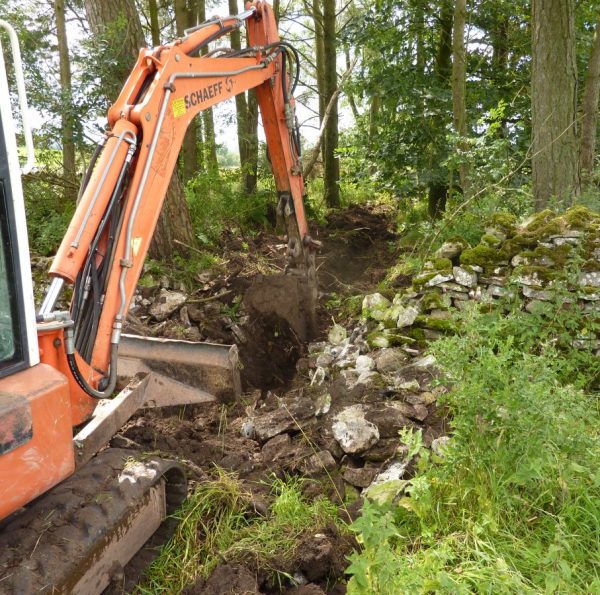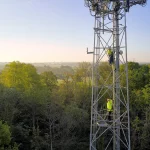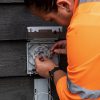99 Percent of Cumbria Still Expected to Get Gigabit Broadband by 2026

The Cumberland Council in England has praised the progress being made on local broadband upgrades in the rural region, which they say has so far helped to extend “superfast” (30Mbps+) networks to cover more than 95% of premises and “gigabit” (1000Mbps+) connectivity to 62%. But they also “anticipate” that gigabit cover will “exceed 99% of properties by 2026“.
Going from gigabit broadband coverage of 62% to 99%+ by 2026 would suggest quite a significant level of rapid build progress for such a rural county, although this is contingent upon over £400m of both commercial and publicly funded broadband deployment programmes being able to reach completion in a timely fashion. Such work is being undertaken by various fixed network providers, such as Openreach (BT), nexfibre (Virgin Media), Fibrus, B4RN and others.
Part of the above effort reflects the £108m (state aid) Project Gigabit broadband rollout contract (Lot 28) for Cumbria (here and here), which was awarded to Fibrus in November 2022 and aims to cover 60,000 hard-to-reach premises “by 2026“. But we should insert a caveat that, when it comes to politics and build targets, the word “by” often means “by the end of“, rather than “before the start of“.
Advertisement
By comparison, the UK government is seeking to achieve “nationwide” (c.99%) coverage of gigabit-capable broadband ISP networks by 2030.
Cllr Chris Southward, Digital Champion, said:
“A huge amount of progress has been made in improving digital connectivity across the Cumberland area and it is great to see so many businesses and residents now reaping the benefits this brings.”
This is an exciting time in terms of the work being carried out to further improve connectivity and I would encourage everyone to check if they can improve the service to their premise and experience for themselves the difference it can make”.
Cumbria certainly has cause for such optimism, particularly since independent data from Thinkbroadband does show that gigabit broadband coverage in Cumberland increased from 37.4% in January 2024 to 60.2% in December 2024. This reflects an increase of 22.8 percentage points within the space of a year (or a growth rate of 60.96%), which, if maintained over the next two years, would enable them to reach their target.
The risk to this is that network deployments tend to slow down significantly, while often also getting disproportionately more expensive, as they reach into increasingly remote and rural communities. Suffice to say that there’s always the prospect for both commercial and publicly funded deployments, particularly in today’s heavily strained market, to fall short (i.e. take longer to reach their targets). Getting to the 60-75% mark is usually the easy part.
Mark is a professional technology writer, IT consultant and computer engineer from Dorset (England), he also founded ISPreview in 1999 and enjoys analysing the latest telecoms and broadband developments. Find me on X (Twitter), Mastodon, Facebook, BlueSky, Threads.net and Linkedin.
« The Cheapest UK 4G and 5G Unlimited Mobile Data Plans for 2024 vs 2022






















































@Mark
Hello Mark,
Are you talking about Cumberland or Cumbria here?
They are not the same thing!
[Pedantic note:
Cumbria County is made up of 2 unitary authorities; Cumberland Council covering the North and Westmorland & Furness Council covering the South of the County.]
The Cumberland Council put out the details, but their actual update only talks about the stats and plans for the whole of ‘Cumbria’. A bit confusing for me too, but I guess that hails from the new council structure and the fact that the county lines of Cumbria still remain intact.
Someone has just told me that Cumberland Council are, effectively, running most of the admin for the whole of the (former) County Council area, since they took over the old County Council offices in Carlisle, so are now running the whole show.
Two councils in name only.
I may be being parochial but “Cumbria, UK”? Surely “Cumbria” is sufficient?
Hi Mark,
This is not news as such, I believe this is the original commitment from back in 2022 https://www.google.com/amp/s/www.bbc.co.uk/news/uk-england-cumbria-63816147.amp
What would be interesting is if we knew how many properties in Cumbria fibrus has delivered so far under the project gigabit contract. They’re 60% the way through from a time perspective and yet I understand have delivered less than 4.8% of project gigabit to date, maybe we can get a official number out of the horses mouth?
I’ll believe it when I see it sadly. I live about 3 miles from a market town which has FTTP, yet I struggle to get 5mbps on a good day when the sun is shining. Xbox / PS5 updates take days (yes, days, not hours or minutes, days) which have to be done overnight, otherwise trying to do it during the daytime when everyone else is attempting to use it results in the router self-combusting (figuratively) as it can’t handle the traffic. Trying to WfH is a no-show most days. Tried to use Starlink, but I found the ‘ping’ rate to be much worse than broadband, which obviously isn’t great when gaming. Looking at National Broadband / 4G wifi, as we have a strong EE mast nearby to solve this issue. (I would use my own mobile data, but I’m with O2 who seem to do everything in their power to ignore Cumbria when it comes to mobile phone reception.)
Passing a home by installing duct / fibre to the kerb as such to technically meet a target is one thing. Actually getting from the kerb to inside the premise is another challenge entirely. I’m not sure councils really get the difference.
Areas with lots of direct-buried phone lines and worse those also having fancy resin driveways built on top, will need to be ready for disappointment.
The second of those things won’t happen until a customer orders a service. The important difference is between premises passed and premises ready for service.